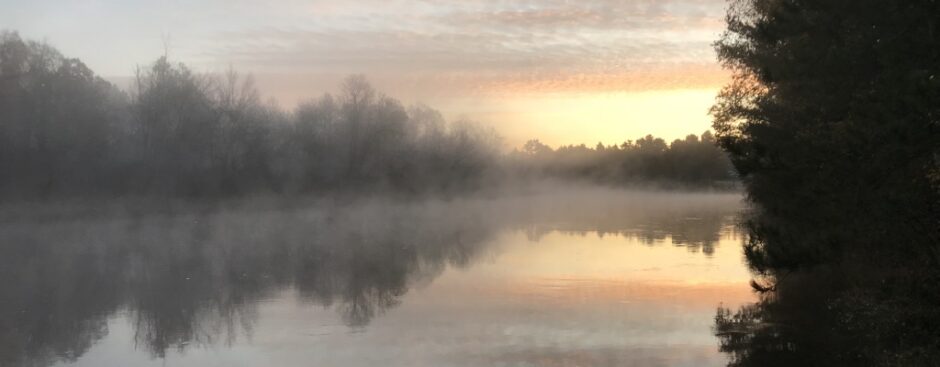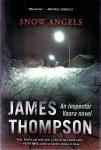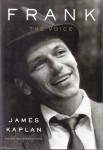
Eight paddlers. Four canoes. Eighteen miles of mostly gentle river. What could go wrong? My wife and I are not avid wilderness buffs but, over the course of our relationship (going on 35 years this summer; married for 33) we’ve enjoyed the occasional foray into the Boundary Waters Canoe Area Wilderness with friends or family. Last year (see “Low Water” in the Blog Archives of this site), our eldest son Matt, his wife Lisa (who had never been in a canoe), Rene’, our youngest son Jack, and I paddled Hog Creek into Perent Lake for a fairly uneventful and bucolic stay. This year, looking at looming book selling events, grad parties, baseball and soccer games, it didn’t look plausible to do another BWCA trip over Memorial Day weekend.
Why not take the canoes from our place down to Independence? That’s only a six hour paddle on very easy water.
When I broached the topic with my wife, she was all for it. When I emailed our three oldest sons, the response was negligible. It took some doing to corral their agreement. We set Sunday of Memorial Day weekend as the day for the big trip. Rene’ and I would supply the pop, beer, chips, candy bars, canoes, paddles, life jackets and such. The boys and their significant others (Dylan’s girlfriend Shelly and Matt’s wife Lisa) would supply the memories. As the weekend approached, I kept a close eye on the weather. Saturday night, it still looked “iffy” to launch the canoes on Sunday. But Weather Underground predicted partly sunny skies and no rain until late in the evening.
It’s only a six hour trip, I thought to myself. If we get started by ten, we’ll be off the river long before the storm.
Logistics were completed by driving three cars, including my Pacifica towing a snowmobile trailer, to the parking lot at Independence. Matt drove his Outlander. Dylan drove Rene’s Matrix. We left the Pacifica and Matrix at the take out point to haul eight canoeists, four canoes, and all our gear back up river.
“Dylan, did you take the keys to Mom’s car?
“Right here in my pocket, Dad,” my second son said, patting his jeans.
The canoes hit water around noon. Trying to round up eight people and get them motivated to spend six hours in canoes on a day where the sky, though not raining, threatened to do so, wasn’t as easy as I’d thought. Still, once we were all seated and on the water, paddles dipping silver and the poetry of flowing water beneath us, I, at least was in heaven.
This is what I live for.
Chris, my third son (who had nearly backed out of the trip) fishes the river every week. He was hard at it as our canoes moved slowly to the west, a pewter gray sky, an ominous sky, overhead. He cast and cast and cast from our place to the first stopping point, Hunter Lake, where two loons dove beneath our canoes, appearing as black and white torpedoes in shallow water.
“I’ve never seen them up close like that,” Lisa said. snapping photos. “They’re beautiful.”
Earlier, as if on cue, a mature bald eagle had alighted at the very top of a white pine and taken notice of our presence. The newcomers to the river, Shelly and Lisa, were suitably impressed. The majestic bird led us down river for a bit until it found something else of interest and soared off.
Sometime later, we pulled up on the river bank and ate sandwiches. Dylan yanked wood ticks off him like fleas off an old dog. Speaking of old dogs, Shelly and Dylan had a duffer in their canoe: Layla, a black lab/shepherd mix who spent most of the journey patiently observing the antics of the humans around her from a bed in the bottom of a canoe. About the only excitement the dog was able to conjure up for herself was playing with the rotting carcass of a dead snapping turtle that Dylan took away from the dog and tossed into deep water.
At Bowman Lake, Chris caught a walleye, which prompted Jack and Chris to lag behind. Chris caught another walleye but a fool with a high powered outboard (better suited for Lake Vermilion than the tiny ox bow off the Cloquet River) kept roaring and revving the big motor, disturbing the tranquility and the fish.
Just past Bowman, we ran into some old friends, Mary and Pete Bauman, whose sons had played sports with Chris and Dylan. The couple was enjoying the river in two small kayaks, fishing occasionally and paddling easily. Mary snapped the picture for this article sometime during our drift down to a new boat launch below Bowman Lake.
Between the lake and the landing, we were blessed to see a pair of osprey guarding their gigantic nest of sticks and twigs set high atop a power pole. The birds circled us, chirping alarm, as we floated on by and marveled at their wing span and their grace.
“A porta potty”, someone in our group said excitedly as we followed the Bauman’s to the new launch. Those of us who needed to use the facilities did so. The rest of our group exited canoes and stretched weary limbs.
The shoulders don’t move quite the way they used to.
“How far you going?” Pete asked us as we clambered back into our canoes.
“Independence.”
Pete paused for a moment and then said, somewhat mysteriously:
“Good luck with the rapids.”
I had done this trip before. Maybe fifteen years ago. I recalled one set of rapids, a fairly modest riffle, that we waded through in low water. Pete’s admonition didn’t seem to square with my memory.
“We’ll be fine,” I expressed with confidence.
The little rapids below where the Cloquet River Inn used to sit (a quaint old burger and beer joint that was once a primary destination for canoeists but has since closed) didn’t cause any of the three canoes in our reduced group problems.
“I wonder if Chris and Jack will just go over to Dave’s and call us for a ride?” I thought aloud, knowing that the lure of walleyes at the junction of Bowman Lake (where my friend Dave lives) and the river likely held sway over my third son.
Matt tried to reach Chris via his cell phone as we left the landing.
“Why do you have a cell phone with you on a canoe trip?”
“Never know when you’ll need it.”
“Electronic devices are forbidden on Munger canoe trips,” I said, pointing to the portable radio he had stowed in the bottom of his canoe so he could keep tabs on the Minnesota Twins.
There was no response from Matt.
Below the Highway 48 bridge, we started catching smallmouth bass. Chris, who had caught up to his lolly gagging parents and siblings, was the first to pull one in. Then Matt landed a nice fish. Finally, Rene’ (who essentially duffed the entire trip so she could fish) landed one.
“How far to the cars?” Matt asked.
“About an hour,” I said.
Chris chuckled.
“Try about two.”
“No way. We’ll be there by six.”
“Try seven thirty.”
The sky doused us with modest rain.
We ran the first sets of rapids near Lost Lake without incident.
“I’m not running the rapids by the highway,” my wife announced after we cleared the last of the boulders.
“Oh yes you are.”
“Oh no I’m not.”
She returned to fishing. She caught a half dozen more bass and two nice walleye which we released. The day was about over when I finally got the message: The trip is not a six hour trip when everyone is fishing. It’s more like an eight hour trip. We’d be lucky to make the cars by dark.
“How far to the landing again?” Matt asked.
I didn’t respond. Chris chuckled.
As we entered the third set of rapids above the highway, Dylan and Shelly found their 18′ Grumman square stern (a beast of a canoe for running white water) caught sideways. Layla, sensing a lost cause, lept from the canoe, flipping the vessel and sending the two young folks into the froth. Luckily, the water was only waist deep and wasn’t cold. The kids were fine but their gear and the canoe were another matter. Absent the weight of the paddlers, the canoe broke free of the rocks and sped downstream. Matt and Lisa caught the Grumman and brought it to shore. Rene’ and I retrieved gear further downstream and waited for everyone to catch up. Then we plunged through another set of rapids as a group without incident.
“I lost my cell phone,” Matt lamented.
“In the water?”
“No, I left it in the woods when I was going potty.”
Hence the prohibition against electronic devices.
Rene’, true to her word, exited the canoe at the next big riffle and made me pilot the craft solo through the rocks. I was nearly free of the turbulence when, to answer a question about the route from Dylan (who was a few yards upstream from the rapids waiting to descend) I turned in my seat and promptly found myself waist deep in the Cloquet. The canoe was fine: I maintained a grip on the stern and eased myself back in. But my pride was mortally wounded. I picked Rene’ up on the bank and proceeded downstream. Matt and Lisa were on shore, emptying water from their canoe. They had flipped their canoe in the rapids and had managed to fill the thing to the gunwales. It was a slow process emptying the Old Town by using a cooler as a bailing bucket.
Of the canoe captains, only Chris escaped a dunking. Rene’ and Jack stayed dry by leaving the rapids to others and walking. Despite her protests, Rene’ and I ran the final set of rapids without difficulty.
At the landing next to Highway 53, I emptied our red plastic Coleman, a perfect canoe for a rocky, shallow river like the Cloquet, and portaged it to the waiting trailer. By the time I got back to the landing, evening’s gloam falling, my teeth chattering, we had a new problem.
“I can’t find Mom’s keys,” Dylan said as he checked the pockets of his soggy jeans.
“Did you lose them in the river?” Rene’ asked.
Our son paused.
“I think I left them in Matt’s car. On the console. I spaced out that we needed them.”
I took a deep breath. I’d miscalculated the length and difficulty of the paddle. The DNR map said the rapids we encountered are Class I, doable if you’re a novice. Well, maybe in an empty canoe with good water. In modest flow, with dogs and coolers and fishing gear, not so much.
“I messed up too,” I admitted. “We’ll work it out.”
The ride back was agonizingly slow. With four canoes strapped to the trailer, the load wanted to buck and pitch as soon as we left Highway 53. I drove 20-30 miles an hour all the way home. During that long drive, the title for this piece came to me.
“You know what we did today, kids?” I asked the three women and Jack.
“Got wet?” Shelly offered.
“Caught fish?” Rene’ asked.
“No, we made memories.”
“You got that right,” Lisa chimed in.
“That’s what I’m all about; making memories.”
The keys to Rene’s car were right where Dylan left them. Sopping wet, I drove Matt’s Outlander back to Independence. My three oldest sons and I loaded soggy equipment and clothing into the vehicles. I drove the Matrix. Matt drove his Outlander. It was after ten and quite dark by the time our journey ended. But there was no doubt: We had made some memories.
Peace.
Mark










